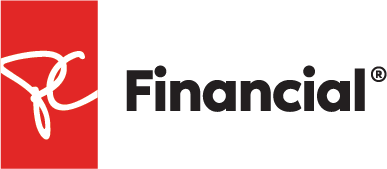How to Budget as a Freelancer

I’ve been a 9 to 5er all my adult life — until this year.
This past January I decided to take a big leap of faith and quit my 9 to 5 job so I could work for myself full-time. I’m getting close to my one-year workiversary as a self-employed person, and I’ve learned a lot about budgeting with a variable income these 9 months.
And that’s saying a lot considering my husband, who I’ve been with for over 10 years, has been a freelancer since the day I met him. But you see, even though I had an idea of how he managed his money, it wasn’t until I stepped into his shoes that I truly understood his methodology.
At the start of our relationship, the idea of budgeting without knowing how much I’d make each month would make me want to break out in hives. That’s why I stuck with a corporate salaried career for as long as I did.
Eventually, I realized that having a variable income didn’t mean living paycheque to paycheque, or throwing your budget out the window. It really just comes down to being prepared. These are the 4 simple steps I follow.
Determine Your Average Monthly Income for Your Budget
It’s impossible to have a budget when you don’t know how much you earn. So how can someone with a variable income get around this major obstacle? It’s simple. To estimate how much you’ll make for the year, look at how much you earned last year as a freelancer, then divide that number by 12 to find out your average monthly income.
If you haven’t been self-employed for that long, take an average of 3 or 6 months as your benchmark. And if you’ve been self-employed for a few years and each year’s income is very different, try to be conservative and use the year where you earned the least amount as your estimator.
Once you have an idea of your average monthly income, you can budget just like anyone with a regular paycheque. You can even set up automatic savings deposits to reach your financial goals and invest regularly.
Include Business Expenses in Your Budget
A lot of freelancers forget about this step, but it can have some expensive consequences if it’s left out. The thing with being a freelancer is that you’re on the hook for any business expenses. You don’t have the luxury of having an employer provide you with a computer, software and unlimited felt-tipped pens for free anymore.
If you’ve been a freelancer for a while and want to find out how much you should save up for your business expenses, look at your past year’s spending as a guide. If you can’t look that far back, look at the past few months.
If you’re completely new to the freelance world, take some time to research other freelancers in your field on blogs and forums (or dare I suggest it, chat them up at industry networking events) to find out what are some typical expenses you’ll need to budget for.
It’s also smart to save on business expenses when possible. There’s no getting around certain expenses when starting a business, but it’s always a plus to save on it when you can.
Your Emergency Fund Should Always Be Fully Funded
It’s always important to have an emergency fund, but it can be a lifeline as a freelancer. And it’s not just because sometimes expenses pop up and you want to make sure you have the money in your bank to pay for them. It’s because when you’re a freelancer and you’ve got clients, sometimes those clients are late with their payment. And even though they’re late, you can’t be late in paying your own financial obligations.
A common rule-of-thumb is to have 3 to 6 months’ living expenses saved up in a high-interest savings account for emergencies. For freelancers, it’s probably a better idea to have 9 to 12 months saved up because you don’t have a guaranteed paycheque to fall back.
Don’t Forget About Your Taxes
No one likes thinking about taxes, but taxes should actually always be on your mind as a freelancer. Why? Because you have to save up to pay your income taxes throughout the year, otherwise you may be forced to drain your emergency fund to pay them or pay what you owe in installments come tax time.
To estimate how much you should save for your taxes, check out one of the many tax calculators online then plug in your income, your RRSP contributions and your business expenses for the year. You may think that you’ll only owe a few thousand dollars, but depending on what tax bracket you’re in it could be in the tens of thousands. So, you better start saving now!
*A minimum annual personal income of $60,000 or household income of $100,000 is required for a new PC Financial World Mastercard. To upgrade from another PC Financial Mastercard, the same income or a minimum $15,000 annual spending on the card is required. Subject to credit approval.
General information not about PC Financial products is provided for your reference and interest only. The above content is intended only to provide a summary and general overview on matters of interest and is not a substitute for, and should not be construed as the advice of an experienced professional. The PC Financial® team does not guarantee the currency, accuracy, applicability or completeness of this content.



%2520(1).png&w=3840&q=75)